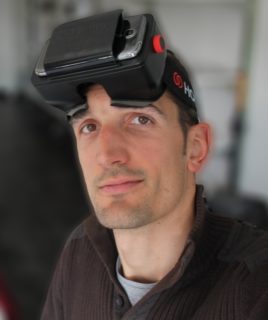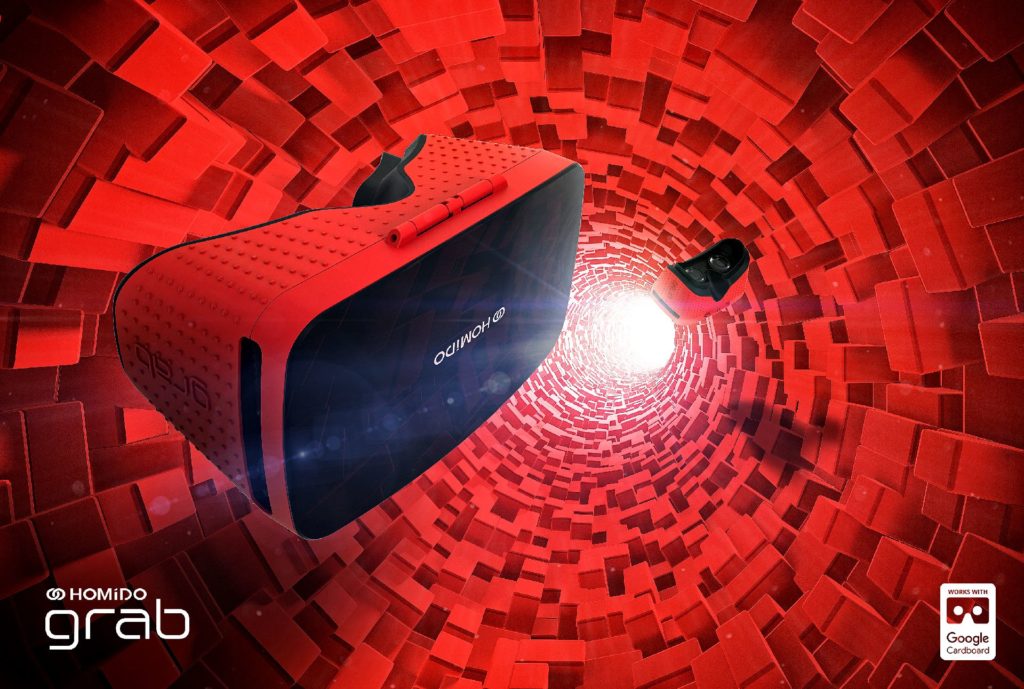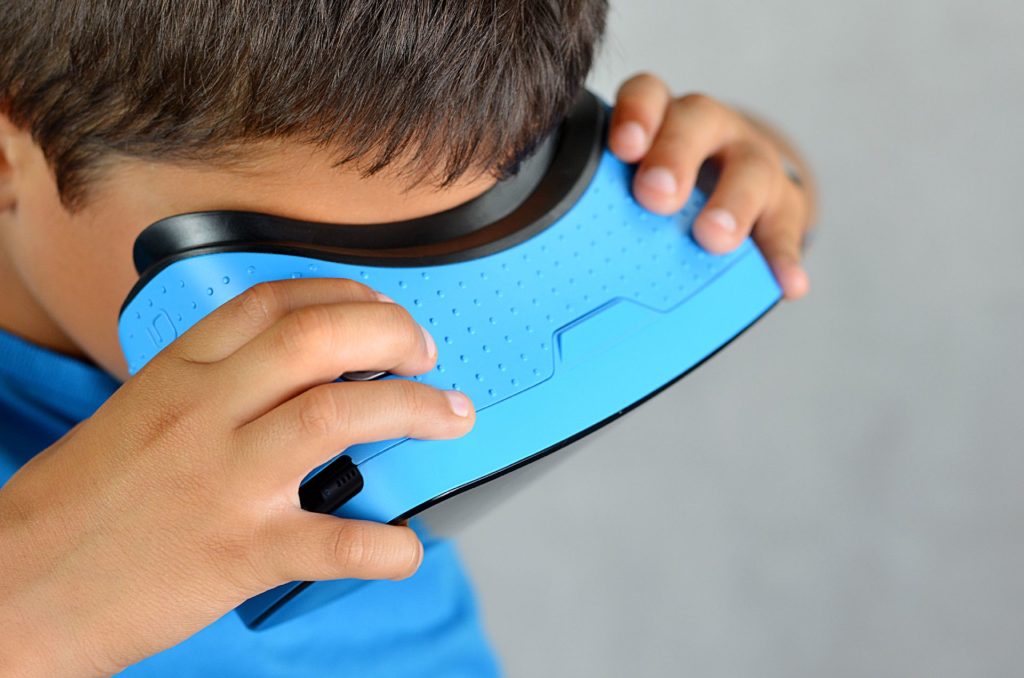Although virtual reality is seen by many as the future of interactive entertainment, the technology still has a long way to go before it sees mass consumer adoption. Homido, a company that specializes in making VR viewers for mobile devices, similar to the Samsung Gear VR and Google Cardboard, is working to help move the technology forward with its line of headsets. These viewers are attractive, affordable, and work with almost any smartphone to experience mobile VR and watch 360-degree videos.
The company recently announced the newest addition to its product line: the Homido Grab, which is designed primarily to appeal toward children and families. They come in a variety of colors and have the “Works with Google Cardboard certification,” which is a testament to their quality. Kids can use the viewer to interact with apps such as Cedar Point VR, which lets viewers take a virtual ride on the Valravn roller coaster. Or they can use educational apps such as Discovery VR (from the Discovery Channel) and Chemistry VR.
“When we were kids, we all imagined exploring places like outer space or going back in time to walk with dinosaurs,” said Homido co-founder and CEO, Mathieu Parmantier in a press release. “As an adult, I wish the kid version of me could’ve done those things. We want to make sure that no generation will ever say that again!”
Parmantier spoke with [a]listdaily about virtual reality technology and how the company is making it accessible to the whole family.

What inspired the creation of a VR viewer for kids and family?
The point of our whole company is to make good VR available for everyone. But right now, it’s positioned as this hobby just for geeks. Our first task was making a quality experience that everyone could get their hands on—something that doesn’t take a $1,000 computer to run, but is more comfortable than something made of cardboard.
We did that with our other headsets, and there’s nothing holding back a kid or a non-techie mom from buying one. But now we wanted something that would invite them in—to say “Hey, virtual reality is for you, too!”
What age group is Homido Grab designed for?
Young kids to mid-teens, and to parents of any age who want to share the experience with their kids.
What differentiates Homido from other VR headsets, particularly the Samsung Gear VR and Google Cardboard viewers?
The thing about VR is that it’s dominated by the ultra-high end and super entry level. The HTC Vive and Oculus Rift are incredible, but let’s face it, they’re just not right for everyone when you need a powerful (usually custom-built) computer to run them on top of the headsets that cost hundreds of dollars.
Cardboard is likewise fantastic, for the opposite reason. It’s very affordable and works with most every phone. But seeing as it’s literally made of paper, it’s best for shorter VR experiences, more of a “first step” than something you can spend hours in.
The Gear VR is a pretty cool compromise—$100, and the tech is solid. But the problem is that it only works with Samsung’s latest phones. That means anyone with an iPhone, or a different Android phone, get left out.
So what’s different about our headsets is that they’re great quality, but everyone can use them. Elsewhere, you get one or the other.
How are you getting the word out about the Homido Grab?
We were just showing it off at IFA in Berlin, and now we’re working with educators in a partnership with Google Expedition to show how VR is a game changer for kids, even in the classroom. We actually just used it to take the French minister of innovation and digital affairs on a trip to Machu Picchu!

Homido has been developing viewers since 2014. Have you seen significant changes in the technology in that time?
Oh yes. It’s almost every day I hear of someone inventing some new technology in VR.
For us, the big thing is mobile technology. Mobile phones get a lot better each year—better screens mean sharper images, and better chips mean games and other apps with better graphics and faster frame rates, which makes things feel much smoother.
But the really interesting tech, which isn’t quite on the market yet, is all the features the mobile developers are planning specifically for VR. Google’s Daydream, for example, is going to make it way easier to make VR work on the software level. Google Tango, which will come out for the first time this fall on the Lenovo Phab 2, lets phones scan the world around them which opens up lots of doors in VR. And we all know Apple is doing something big behind those closed doors.
In what ways do you think mobile VR will grow?
In the long run, there’s no way any other kind of VR will compete with mobile. Mobile is what everyone knows, and it’s what’s already in everyone’s pocket. And the further the tech grows, the more mobile VR is going to feel as good as you can get with a hardcore gaming computer.
Slowly but very surely, we’re going to see non-geeks trying VR. And then, staying in VR—not checking out little five minute games, but jumping into VR as a real hobby, the way TV or video games are. And that’s why we’re inviting them in with Grab.

